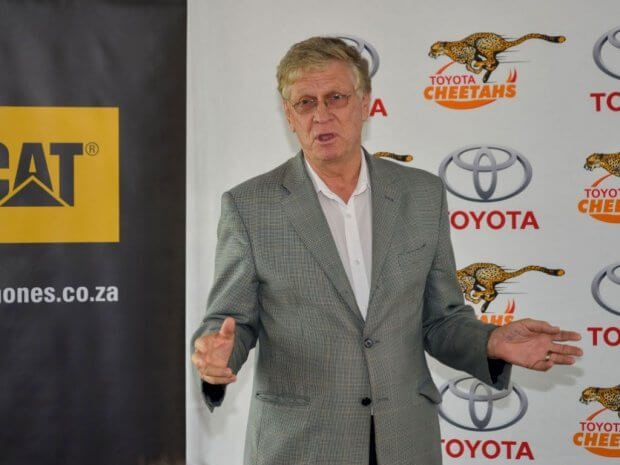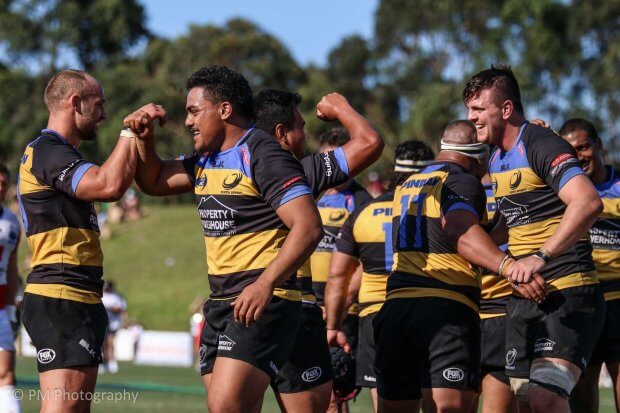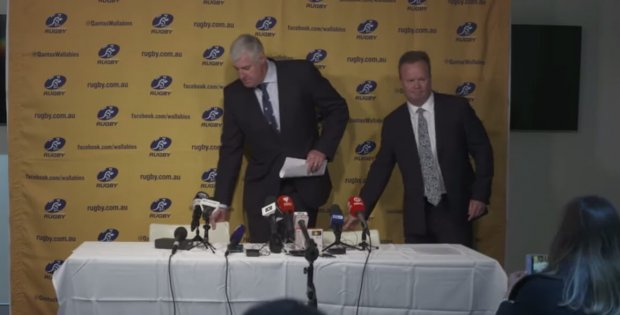The Supreme Court has spoken, and the Force’s time in the Super Rugby competition is over.
Force fans are understandably furious. The ARU has suffered a serious loss of faith and authority at all levels, as the changes agreed with SANZAAR months ago dragged on. “Twiggy” Forrest and Rugby WA are talking appeals. Fans are wavering, with attitudes varying from hopeless apathy to “burn it all down” fury.
Quite frankly, Australian rugby is in trouble. In fact the constant whining on the part of some parts of the Australian rugby media in the past, counter balanced by the arguable “soft balling” reporting of other parts, has probably lulled many rugby fans into a trance of thinking they had heard it all before. We have all heard it before, but this time it’s serious. Really serious.
Back Where We Started
Remember that when Bill Pulver and Cameron Clyne gave the press conference months ago, and said the ARU couldn’t continue with 5 teams or it would send them broke. That shocked me to the core at the time, and I understood then how serious it was and maybe why a team really did have to go. I think we all got distracted by the process and all the arguing since, and the court case, but we come back to that message again. We had to change. That’s been consistent.
Now in the shake out from the Supreme Court decision, the ARU has released financial analysis it says shows the game would be broke within 2 years if it had continued with 5 teams. Some doubt the numbers. Others complain all this should have been made clear long ago.
Could it have been better handled? Yes. By all sides? Yes. Has that also distracted us from the real issue? Yes.
No, Before That
Everyone has been quick to burn the ARU in effigy because they wanted someone to blame for everything going wrong. Again we come back to the real issues, being:
- The causes were put into play years ago by earlier administrations
- Australia should apparently never have expanded to 5 teams in the first place, and John O’Neill said (shortly after the press conference earlier this year) that when the ARU did decide to he as CEO recommended against it, but the board at the time didn’t listen. VRU didn’t complain. RUPA didn’t complain. The media didn’t complain. The fans didn’t complain, although some had spent years wondering about the ARU finances.
- The constant expansion of the Super Rugby comp has tended to be to placate South Africa, who wanted more teams, in part to get a South East Cape side in to in turn placate the South African government and their aggressive program to increase black involvement in rugby. However, the ARU and the NZRU gave into this when they could always have said no, as any SANZAR (now SANZAAR) decision needed consensus. At each point they clearly saw benefit in it for themselves in some way. However, at each point from memory South Africa was always rattling the sabre to run off to Europe if they didn’t get what they wanted. Which turned out to be their Plan B for the Kings and Cheetahs when cutting them.
- The move to the Super 18 was the final straw. It moved to a format that was too unwieldy and complicated. It reduced derbies which were the more attractive games for each nation. The finals qualification was seen as unfair. The South African teams didn’t even get to play any NZ teams in some cases. This was all done to get an extra South Africa team in, as well as work with World Rugby to get Argentina in, and squeeze Japan in. The latter was apparently aimed at getting exposure to a new large TV market for extra dollars, to compete with European money and the talent drain arising. However, overall the changes made Super Rugby such a mess of a product it started to quickly and clearly flop (as I recall many fans raised when the changes were announced – funny that). Thus the London meeting and the changes now occurring cutting Super Rugby back to 15 teams.

Now What?
The ARU is now in survival mode. The sport clearly has to see out the last 3 years of the current (renegotiated) SANZAAR and TV deals, being 2018, 2019 and 2020. When we get to 2020 the deal making will start again, as to what the new deal for 2021 onwards is. It is quite clear that rugby in the southern hemisphere from 1 January 2021 will be very different to what it is now. The new global season will start in 2019, but the financial constraints of rugby in the southern hemisphere have been laid bare.
Planning for that has to start now. As a sport, what we need to do is work out how we survive the next 3 seasons, and what we can and need to put in place both over that period, and from 2021 on. Now is not the time to be fighting and spending limited resources (money, time, goodwill, brand value, etc) fighting about cutting a team. Easy for me to say as an east coast, and not a Force, fan. But I am speaking as an Australian rugby fan now.
Totsiens, my friend
Last week, some quotes in the weekly Guardian rugby email newsletter from the chief executive of SA Rugby, Jurie Roux, about the Cheetahs and Kings joining the (now) Pro 14 caught my eye. They are even more relevant now with the Force apparently cut.
While he said leaving SANZAAR was not something that was being looked at, that was clearly in the context of the current deal running until the end of 2020. Further, the article noted that South Africa host the Lions in 2021, a series that would seem to make no sense if the Springboks were in the Six Nations.
Part of what he said was “We feel shackled in SANZAAR but now we have the opportunity to go north. It gives us options. People think the Pro 14 move isn’t just about the Cheetahs and the Kings but it is so much more than that.
“We don’t have options in SANZAAR , which means you’re actually nowhere and that’s not where you want to be. But we are really good for each other, so we will still participate; we are strong because we play against Australia and New Zealand.”
“We can never have eight franchises in SANZAAR, we can have four or five maximum and maybe we’ll even go down to three. But at least we now have options. We still need to play against Australia and New Zealand to be the best, so I don’t see the relationship ending but we’ll have more international exposure up north.”
That to my mind provided a startling look into the mind of South African rugby, and how they see the future for them.
I fully expect South Africa from 2021 on will look to move their remaining Super Rugby teams (the Lions, Bulls, Sharks and Stormers) to the Pro 14, but keep the Springboks in the The Rugby Championship. The time zone, reduced travel and better money from being in Europe is just too good. It was attractive 5, 10 and 15 years ago, but in that time the money in European rugby has grown so much it is now irresistible. However, the Springboks clearly want to keep playing the All Blacks (and Wallabies) as it keeps them a better side than say by jumping into Six Nations.

Redirect, Refocus, Regrow
The next 3 years really needs to be spent:
- Tightening the belts, battening down the hatches, and staying solvent. As a national sport together.
- Keeping Perth in the NRC as a spring board to bring the Force back. If we can get enough revenue in the 2021 to fund 5 teams, we cannot click out fingers and create a 5th team out of thin air. Remember the disruption to other teams (especially the Reds) when the Force came in, and similarly the Rebels which was softened by initial foreign players allowances. We cannot store a Super Rugby quality team for 3 years (no matter what Twiggy Forrest might do – it just won’t happen), but we can keep a spine to build back from so the last 12 years of building in WA isn’t all gone to waste. Playing in Super Rugby cannot be seen as the be all and end all of being part of Australian rugby in that time.
- Working out what the TV deal and competition from 2021 will be, for the first 5 years and on after that over 10, 15, 20 years and more. We cannot just work that out in 2020 at the last minute (which seems to have been the approach to date). It will take time and proper planning, and discussion as a sport. The current competition cannot be rolled over or just tinkered with as has tended to be the case. We need a viable plan in place so if and when South Africa takes their Super Rugby teams to Europe, we can say “Good luck” without being caught short.
As such, we need to be talking to the NZRU (but also Japan Rugby Union, and World Rugby in respect of the Pacific Island nations given their support for Fiji in the NRC). Australia and NZ always sink or swim together. If the ARU hits the wall, NZ doesn’t have the location, the population or the money to go it alone. It would just become a bigger and easier talent source for Europe and Japan to poach players from like the Pacific Islands (plus a new market for NRL and AFL). This doesn’t mean Australia gets to dictate going forward, but it does mean the NZRU needs to look upon any approach as having to look after both unions. Australia’s loss long term will also be NZ’s, and we can only truly grow together. If that means things like allowing players to play for each others teams and still play Tests, reorganising the NRC and NPC to work together, etc, then so be it.
Personally I see an ANZAC competition also adding in the Sunwolves, Fiji and hopefully Samoa and Tonga (adding that Islander flair that overseas TV viewers will love, but also helping prop up the sport there), but this will all come down to TV deals and revenue. And the TV sports industry is in massive flux and disruption at the moment.

Scapegoats form an orderly line to the left …
With departures this year and Bill Pulver going, the senior management of the ARU will go or be gone. They will be the sin eaters and scapegoats. Everyone gets to blame them. One thing I have learnt in working within and for large institutions is that such a change of guard can be both useful and dangerous.
Useful because it lets everyone get on with dealing with each other and the problems with the fiction of a “clean slate”, when often many of the people are still the same.
Dangerous because people sometimes think the problem was the people now gone, so the problems are solved. To the contrary. The problems are the same.
Night Gathers
This process needs to galvanise the sport to fix the the serious problems rugby faces, and properly. We are facing a similar challenge to what soccer (yes, I know football) in Australia faced and fixed about 15-20 years ago (and actually took a Federal government commission, justified by the funding for the sport, to force). However, rugby isn’t built on the same bedrock as football. It is not as popular a sport as football. It is more of a fringe sport, more so now than even 20 years ago. While it enjoys more of a national footprint than 20 years ago, its heartland of NSW and Queensland is under serious pressure from AFL, rugby league, and football, and simple concern by parents about full contact sports (which league also faces).
To steal a Game of Thrones analogy – Winter is Here. We only survive until the spring working together, and planning for the summer not just surviving the winter. Hold the door!

